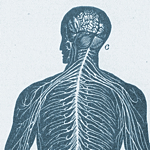I was honored to be part of a symposium this week co-hosted by the National Endowment for the Arts and the UK’s Arts & Humanities Research Council’s Cultural Value Project. The event drew an extraordinary group of researchers and practitioners, including many who had written defining works for my own learning journey in this field. Our task was to explore whether and how our research on arts participation should evolve, especially given the dramatic evolution of arts engagement and the shifting landscape of resources that support such research.
The event caused me to reflect on why we do ANY kind of research in any context. And my conclusion (at least for myself) was that we observe and evaluate things because we want to move through the world with intent. To do so, we need many ways of seeing, feeling, pushing, prodding, and testing that world and our relationships within it.
Our body does this through its sensory systems, including the brain that processes the information the sensors provide. These systems are highly complex and interrelated. But in 1906, Sir Charles Sherrington offered a rather useful clustering of these systems into three types.
- Exteroception – includes the sensory systems that gather information external to our bodies (sight, hearing, smell, touch, etc.);
- Interoception – includes the sensory systems that gather information internal to our bodies (internal pain or discomfort, hunger, and so on);
- Proprioception – includes the sensory systems that tell us the relative position of the parts of our body, and their current effort (arms, legs, hands, joints, etc…if you close your eyes, outstretch your arm, and try to touch your nose, you’re using this system of proprioception).
During the NEA/UK conversation, I started wondering about a fourth system — not of nerves and receptors, but of complex observations and intuitions that might complete the set:
- Socioception – the systems that inform our sense of who we are and where we are in relation to other people.
Our bodies move through the world thanks to the information from these systems, and thanks to our ability to select key bits of information and consider them together over time, shifting as our internal, external, and body positions change.
Beyond our individual, physical selves, there are many “bodies” within which we move through the world. We have collectives of people moving together, including organizations (collectives bound by contracts). We have the body of our community (collectives bound by geography or other affinities). And we have many layers of body politic — the formalized, public processes that define our governments and civic institutions.
Each of these bodies also benefits from external, internal, position, and social information and processing, as our physical bodies do. But in these collective bodies, we must often build the sensory, information, and interpretive systems through collective action or agreement. These are the systems we call “research.”
For each type of body we’re moving within — individual, collective, organizational, communal, public — the same information might occupy a different system. For example, sales records for a single theater company are internal information (interoception) for that theater but external to its competitor, while the collective sales records for all theaters in a region describe the shape and position of the theater body (proprioception). Attendance data for a whole city is mostly external information for individual arts organizations, but internal to the cultural ecology. And comparative cultural information between cities can quickly become social reference information (socioception).
Just to be clear, this is not how we were discussing the issue of arts participation research during the session. Rather, this was an evolving metaphor for me as I tried to make sense of the conversation. We were most productive, it seemed to me, when we were clear about which body we were talking about (personal, collective, organizational, community, public, etc.), and which intent we were attributing to that body (budget justification, persuasion/advocacy, social equity, health and wellness). When we lost focus on either of these questions, the conversation lost its way.
I learned extraordinary things from astoundingly smart and passionate people — new methods, new modes of research, new uses of existing data, and new data from unexpected places. But mainly I learned that observation, evaluation, and action are most effective when we’re relentlessly clear on our boundary and our intent.



Coincidentally, I just picked up a copy of Lindblom and Cohen’s 1979 inquiry into inquiry, “Usable Knowledge.” The summary states, “Social scientists do not always fully appreciate that professional social inquiry is only one of several ways of solving a problem. They are also often engaged in a mistaken pursuit of authoritativeness, not recognizing that their contribution can never be more than a partial one. Cohen and Lindblom suggest that they reexamine their criteria for selecting subjects for research, study their tactics as compared to those of policy makers, and consider more carefully their role in relation to other routes to problem solving.” Perhaps, 35 years later, it’s time for another examination of the the relationship between social (science) inquiry and its usefullness for policy. Or, perhaps, we are already in the midst of that reexamination.
Andrew:
Thank you for your post. I think that intentionality is a vital trait for people, non-profit organizations and societies.
I’m wondering if your thoughts might also relate to Maxine Greene’s concept of ‘wide-awakedness’?